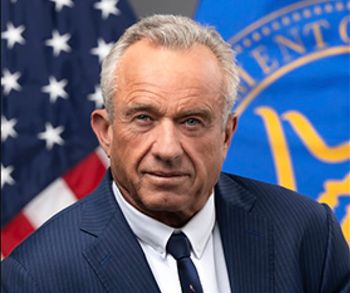
As hospitals face cost pressures, concerns emerge over cuts in infection control
The Association for Professionals in Infection Control and Epidemiology is hearing reports of layoffs in those programs. Leaders of the association and the Leapfrog Group warn about risks to patients.
With hospitals seeing
Now, some infection control professionals are apparently among those losing jobs, and healthcare leaders are worried that it could threaten the safety of patients and staff.
The Association for Professionals in Infection Control and Epidemiology and The Leapfrog Group have issued
Devin Jopp, CEO of the Association for Professionals in Infection Control and Epidemiology, tells Chief Healthcare Executive® that he is hearing of hospitals reducing staff in infection control due to cost pressures.
“We have heard and gotten confirmed reports of some hospital systems going through that,” Jopp says. “In some cases, it can be dramatic. In one large healthcare organization, it was a 25% reduction in infection prevention and control resources. In others, it's a little bit more muted.
“But if you take one infection prevention control staff member out of a team of like, four or five, even that is a tremendous impact, You know, 20, 25% impact on the amount of folks that are available to do that critical work in hospitals.”
(See part of our conversations with Devin Jopp of APIC and Leah Binder of The Leapfrog Group. The story continues below.)
‘The axe has fallen’
The NIH
“I think what we're seeing across the board is … in some cases, reduction of infection prevention control budgets, which includes the programs, the staffing and or, just a lot of belt tightening in these areas,” he says.
Still, Jopp says he’s been surprised to see cuts in infection control staff, because of the vital work that they do, and the need to prevent patients from getting infections during a hospital stay.
And he notes it’s typically not the biggest area in a hospital’s budget.
“Who wants to see healthcare associated infections go up? So on the surface of it, it seems kind of ridiculous that we have to put a statement out around this. On the other hand, I think you know, when budget axes start swinging and they start doing across-the-board kinds of perspectives, these kinds of things get caught up in dragnets,” Jopp says.
“I can't say that that infection prevention control has fared better or worse than other areas in hospitals, but I think as as hospital executives have looked at trying to balance the books or the potential to manage risk, certainly the axe has fallen in multiple areas and is impacting infection prevention control,” he adds.
‘Shouldn’t be shrinking’
Leah Binder, president and CEO of The Leapfrog Group, says that she’s worried that cuts in hospital infection control programs will lead to greater risks for patients and staff.
A patient safety organization founded by large employers, The Leapfrog Group publishes report cards on how hospitals fare in patient safety, and the group has seen health systems make progress in recent years in reducing hospital-based infections. In
Binder tells Chief Healthcare Executive® that she’s concerned that those gains could be erased, raising risks for patients.
“We've seen a significant reduction in healthcare-associated infections over the past few years,” Binder says. “They spiked during the pandemic, but they came down pretty quickly, and they're still going down below where they were before the pandemic. So we're very impressed. We know that infection preventionists are doing extremely important work that is often overlooked.”
Binder says she has “deep concern” about cuts in infection control programs.
“That would immediately herald a return to some dark times when we had a terrible record on healthcare-associated infections,” Binder says.
Even with recent improvements, hospitals still have room to improve when it comes to preventing infections, Binder says.
“We still don't have a great record,” she says. “We still have a lot of more work to do, but we certainly shouldn't be shrinking that workforce, and we should be putting even more focus on infection prevention.”
Binder acknowledges the growing financial difficulties of hospitals, and she says she’s worried about the potential of added pressures if fewer people are covered by Medicaid. But she says patient safety needs to take priority.
“I'm concerned that hospitals, as they undertake cost cutting measures, will cut the wrong costs, and they'll cut costs at the expense of their patients,” Binder says. “So we really don't want them to do that. We really want them to keep an eye on, keep a focus on patient safety, because when leaders are distracted from patient safety, people die. It is that simple.”
Hospitals that make cuts in their infection prevention programs may find it difficult to bounce back if they start to see an uptick in hospital-associated infections, Jopp says. He says it’s “awfully hard to regain ground.”
Plus, Jopp says the insidious nature of tracking hospital-associated infections is that by the time it’s clear that there’s a problem, it’s not so easy to fix.
“By the time you start seeing changes in data, then you're also back to having to go back and re-staff or re implement those kinds of programs, which takes time,” Jopp says. “So I think, losing the mind share and the talent that they've built, I think, is a real danger in this environment.”
Even in an uncertain time, Jopp advises hospital leaders to understand the value of infection control programs.
“I've always told CEOs, if you don't know who's leading your IPC program, get to know them,” Jopp says. “They should be your best friend. They're your eyes and ears.”






































